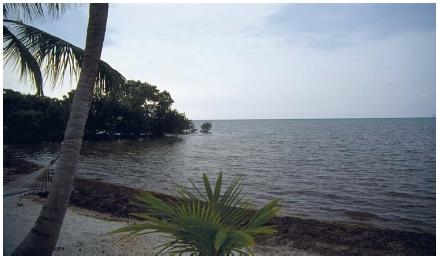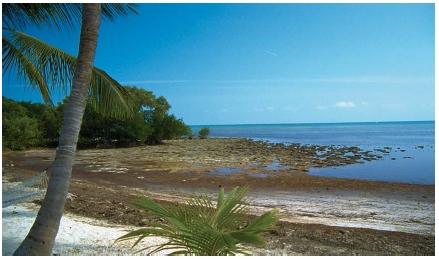Tides

Tides are distortions that occur in the shape of a celestial body. They are caused by the gravitational force of one or more other celestial bodies on that first body. In theory, any two bodies in the universe exert a gravitational force on each other. The most important examples of tidal forces on Earth are ocean tides, which result from the mutual attraction of the Moon and the Sun.
Greek geographer Pytheas (c. 380 B.C. –c. 300 B.C. ) was perhaps the first careful observer of ocean tides. In about the third century B.C. , he traveled outside the Strait of Gibraltar and observed tidal action in the Atlantic Ocean. Pytheas suggested that the pull of the Moon on Earth's oceans caused the tides. Although largely correct, his explanation was not widely accepted by scientists until the eighteenth century, when English physicist and mathematician Isaac Newton (1642–1727) first succeeded in mathematically describing the tides and what cause them.
Theories of tidal action
Although the Sun is larger than the Moon, the Moon is closer to Earth and, therefore, has a greater influence on Earth's ocean tides. The Moon's gravity pulls on the ocean water on the near side of Earth. This force causes the water, since it is able to flow, to form a slight bulge outward, making the water in that area slightly deeper.
At the same time, on the opposing side of Earth, a second tidal bulge occurs that is the same size as the first. This second bulge forms because the force of the Moon's gravity pulls the solid body of Earth away from the water on Earth's far side. The result is that two lunar tidal bulges exist on Earth at all times—one on the side of Earth facing the Moon and another directly opposite to it. These bulges account for the phenomenon known as high tide.
The formation of these two high tide bulges causes a belt of low water to form at 90-degree angles to the high tide bulges. This belt, which completely encircles Earth, produces the phenomenon known as low tide.
In addition to the lunar bulges, the Sun forms its own tidal bulges. However, due to the Sun's much greater distance from Earth, its tidal effect is approximately one-half that of the Moon.
Words to Know
Diurnal: Occurring once every day.
Ebb tide: Period when the water level is falling; the period after high tide and before low tide.
Flood tide: The period when the water level is rising; the period after low tide and before high tide.
High tide: The event corresponding to the largest increase in water level in an area that is acted upon by tidal forces.
Low tide: The event corresponding to the largest decrease in water level in an area that is acted upon by tidal forces.
Neap tides: Period of minimum tidal range that occurs about every two weeks when the Moon and Sun are at 90-degree angles to each other (the first and third quarter moons).
Semidiurnal: Occurring twice every day.
Slack tide: Period during which the water level is neither rising nor falling.
Spring tides: Period of maximum tidal range that occurs about every two weeks when the Moon and Sun are in line with each other (at the new and full moons).
Tidal current: Horizontal movements of water due to tidal action.
Tidal range: Vertical distance in sea level between high tide and low tide during a single tidal cycle.
Every 14 days, the Moon and Sun are in line with each other (new moon and full moon). Their gravitational forces combine to produce a maximum pull on Earth. The tides produced in such cases are known as spring tides. The spring high tide produces the highest high tide and the spring low tide produces the lowest low tide.
Seven days later, when the Moon and Sun are at right angles to each other (first and third quarter Moon), the two forces act in opposition to each other to produce a minimum pull on the oceans. The tides in this case are known as neap tides. The neap high tide produces the lowest high tide and the neap low tide produces the highest low tide.
The nature of tides
In most places, tides are semidiurnal, meaning there are two tidal cycles each day (a tidal cycle is one high and one low tide). The high water level reached during one of the high tide stages is usually greater than the other high tide point, and the low water level reached during one of the low tide stages is usually less than the other low tide point. This consistent difference is called the diurnal inequality of the tides.
In a few locations, tides occur only once a day, with a single high tide stage and a single low tide stage. These are known as diurnal tides. In both diurnal and semidiurnal settings, a rising tide is called the flood tide. A falling tide is called the ebb tide. The point when the water reaches its highest point at high tide, or its lowest point at low tide, is called the slack tide. At this point the water level is static, neither rising nor falling, at least for a short time.

As the Moon revolves around Earth, Earth also rotates on its axis. Consequently, in order to return to the same position relative to the Moon above, Earth must rotate on its axis for 24 hours and 50 minutes (a period known as a lunar day). The additional 50 minutes allows Earth to "catch up" to the Moon. As a result, on a coast with diurnal tides, each day the high tide (or low tide) will occur 50 minutes later than the day before. On a semidiurnal coast, each high tide (or low tide) will occur 12 hours and 25 minutes later than the previous high tide (or low tide).
The movement of ocean water as a result of tidal action is known as a tidal current. In open water, tidal currents are relatively weak and tend to change direction slowly and regularly throughout the day. Closer to land, however, tidal currents tend to change direction rather quickly, flowing toward land during high tide and away from land during low tide. In many cases, this onshore and offshore tidal current flows up the mouth of a river or some other narrow opening. When this occurs, the tidal current may then reach speeds as great as 9 miles (15 kilometers) an hour with crests as high as 10 feet (3 meters) or more.
Most tides rise and fall between 3 and 10 feet (1 and 3 meters). In some locations, however, the tides may be much greater. These locations are characterized by ocean bottoms that act as funnels through which ocean waters rush upward towards or downward away from the shore at

very rapid speeds. In the Bay of Fundy, between Nova Scotia and New Brunswick, the difference between high and low tides (the tidal range) may be as great as 46 feet (14 meters). In comparison, some large bodies of water, such as the Mediterranean, Baltic, and Caribbean Seas, have areas with tides of less than a foot (0.3 meter). All coastal locations (as well as very large lakes) experience some variation in tidal range due to the affects of neap versus spring tides.
[ See also Celestial mechanics ; Gravity and gravitation ; Moon ; Ocean ]